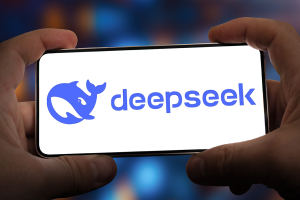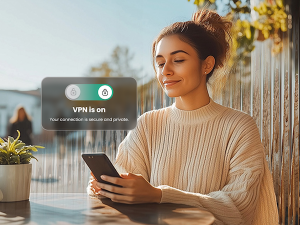What is oversharing on social media? And how do you avoid it?
Oversharing on social media takes on a couple different aspects. There’s one that’s personal, like what you share and how often you share it. Another revolves around your privacy and your security. Namely, how does what you share and how often you share it affect your privacy — and what further effect does that have on your security? Does it open you up to scams, identity theft, and other forms of cybercrime?
A grasp on that can help you avoid oversharing and post on social media in a way that’s “just right.”
Granted, it might seem a little odd to talk about privacy and the like on social media, which is, by definition, social in nature. The idea, though, is striking a balance — getting all the benefits of connection and keeping up with people and groups that matter to you in a way that’s enjoyable and safe. And healthy too.
Let’s start with a look at what oversharing looks like and its possible effects. From there, we can check out some specific ways you can avoid oversharing on social media.
The personal aspect of oversharing
For starters, oversharing usually conjures up the notion of T.M.I., or “too much information.” That might involve posting too often, yet it can also involve sharing too many personal details. Along those lines, a long-standing definition of oversharing goes like this:
“The excessive generosity with information about one’s private life or the private lives of others.”[i]
Of course, “excessive” is a relative term. Different people have different boundaries when it comes to what’s personal. Likewise, the people reading a post have different ideas of what counts as sharing “too much” and what doesn’t.
Further complicating the matter is how many people choose to have multiple accounts on the same platform.
In particular, teens and younger adults often have a broader public account with many followers along with a more private account that they share with select friends. A post that might be fine, and expected, on a private account might come across as an overshare on a public account.
However, there are cases where oversharing can point to deeper issues, like anxiety, depression, and unhealthy attention-seeking behavior. So-called “sadfishing” offers one example, where people create negative posts in a bid to get sympathy. Other examples include sharing details about oneself online that a person would normally never share on a phone call or in a face-to-face conversation.
If you have concerns about yourself or someone you know, confide in someone you trust for advice. See if they have the same concerns as you do. Also, in the U.S., you can speak to speak to a licensed counselor through the “988” service, which you can learn more about at https://988lifeline.org. It’s free and confidential.
The privacy and security aspects of oversharing
When it comes to privacy and security, oversharing takes on a different meaning. Elsewhere in our blogs, we’ve talked about that issue like this:
“Saying more than you should to more people than you should.”
Now, here’s where your privacy and security come in. Consider the audience you have across your social media profiles. Perhaps you have dozens, if not hundreds of friends and followers. All with various degrees of closeness and familiarity. Post something personal on social media to that broad audience, and you indeed might end up sharing something that puts your personal privacy and security at risk. After all, if you have hundreds of followers, how many of them are people you truly know and absolutely trust?
Here are a few scenarios:
- “This is the pool at the rental home I’m staying at this week. Amazing!” Which also tells everyone, “My home is empty for the next few days.”
- “I can’t start my workday without a visit to my favorite coffee shop.” It also says, “If you ever want to track me down in person, you can find me at this location practically any weekday morning.”
- We’ve also previously shared word of the Japanese pop singer who was assaulted by a man who tracked her down through the reflection in her eyes on a selfie she posted.[ii]The alleged attacker noted a train station sign in her eyes, one she regularly used for her commute, and laid in wait for her there.
In other words, social media posts have a way of saying much more than we might think. And when shared publicly or to a large audience of friends and followers you don’t know well, that can expose you in ways you might not want.
How to avoid oversharing on social media
As with so many things online, staying safer and more private calls for a mix of technology and internet street smarts. Things like settings, privacy tools, and what you post can help you enjoy social media safely.
Be more selective with your settings.
Social media platforms like Facebook, Instagram, and others give you the choice of making your profile and posts visible to friends only. Choosing this setting keeps the broader internet from seeing what you’re doing, saying, and posting — not to mention your relationships and likes. (Think of your social media profile showing up in a Google search.) Taking a “friends only” approach to your social media profiles can help protect your privacy because that gives a possible scammer or stalker much less material to work with.
Some platforms further allow you to create sub-groups of friends and followers. With a quick review of your network, you can create a sub-group of your most trusted friends and restrict your posts to them as needed.
Stay on top of your privacy with our Social Privacy Manager.
Here’s the thing with those social media settings — they can be challenging to locate and confusing to adjust. In all, it can take time to make sure that your info and posts are only shown to people you want to see them. Our Social Privacy Manager can do that work for you.
Based on your preferences, it adjusts more than 100 privacy settings across your social media accounts in just a few clicks. This way, your personal info is only visible to the people you want to share it with.
Say “no” to bots and bogus accounts.
There are plenty of fake accounts out there on social media. On Facebook, the platform acted on 1.2 billion fake accounts between April and June 2024 alone.[iii] On X, formerly Twitter, the platform announced a “bot purge” in 2024. However, in May 2023, the platform suspended access to a publicly available data set that helped find and track bots on the platform. Still, researchers continue to find false accounts, particularly ones powered by AI tools.[iv]
The bottom line is this: don’t accept invites from people you don’t know. Bad actors might use them to launch scams, gather personal info on potential identity theft victims, and spread disinformation. Also, be aware that some followers might not be who they appear to be. In the immediate wake of the “bot purge” on X, many accounts saw themselves losing thousands of followers.[v]
Consider what you post.
Think about posting those vacation pictures after you get back home, so people don’t know you’re away when you’re away. Also, consider if your post pinpoints where you are or where you go regularly. Do you want people in your broader network to know that? Closely review the pics you take and see if there’s any revealing information in the background. If so, you can crop it out (think notes on a whiteboard, reflections in a window, or revealing location info). Further, ask anyone you want to include in their post for their permission. In all, consider their privacy too.
Consider what you post about others, too.
Indeed, oversharing can include what you post and say about others online as well. A good rule of thumb when posting group pictures online is to ask if the other people in them are okay with it going onto social media. Also ask yourself, “Is this my news to share?” For example, a friend leaves one job to take on a new role elsewhere. Before posting, “Congrats on the new job!” let them make that first announcement themselves.
For parents, this calls for extra consideration too. Anything you post about your child becomes a part of their permanent online record. What might seem funny or cute today might become embarrassing or even fodder for cyberbullies tomorrow.
A more private social media…
Yes, you give up some privacy by using social media. That’s the very nature of it. The trick is in sharing just enough and with just the right people.
Being careful of who you accept as a friend, keeping an eye on accounts that follow you, and paying mind to what you post and how often are all ways you can prevent oversharing. Likewise, using tools to fine-tune who sees your posts, keeping things to close friends in sub-groups or secondary accounts, and keeping your social media accounts out of the public eye are yet more steps you can take to protect yourself, your privacy, and your security on social media.
[i] https://portal.research.lu.se/en/publications/front-and-backstage-in-social-media
[ii] https://www.theguardian.com/world/2019/oct/11/japanese-assault-suspect-tracked-down-pop-star-via-eye-reflection-in-selfie
[iii] https://transparency.meta.com/reports/community-standards-enforcement/fake-accounts/facebook
[iv] https://arxiv.org/pdf/2307.16336
[v] https://www.socialmediatoday.com/news/x-formerly-twitter-bot-purge-sees-big-accounts-lose-followers/712495/












